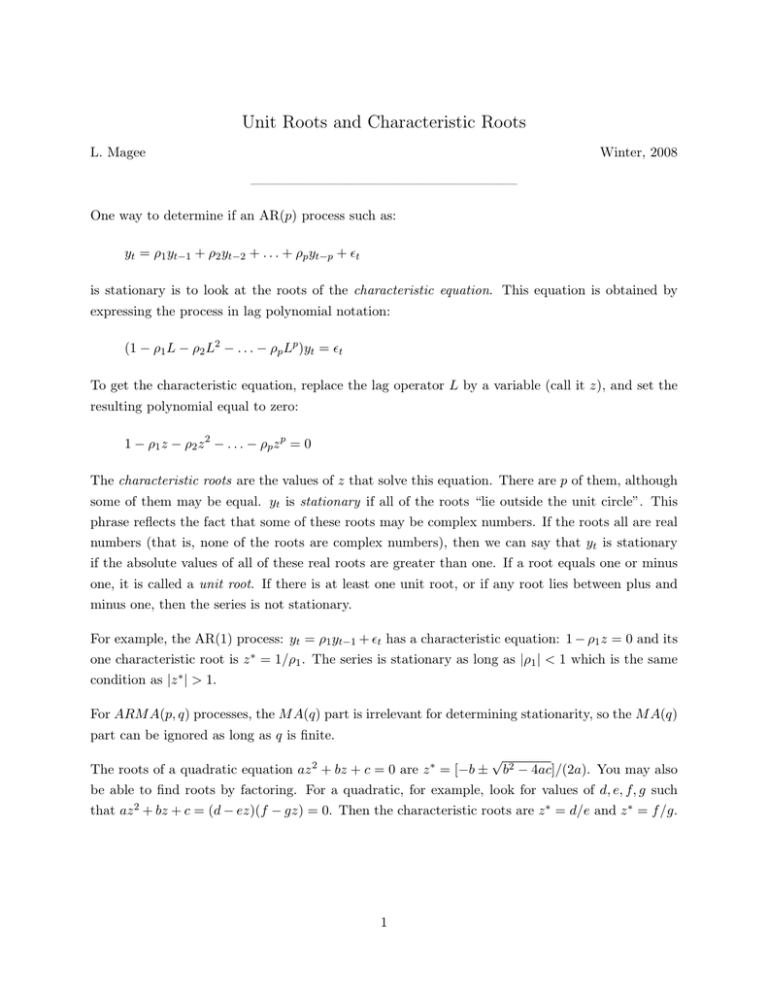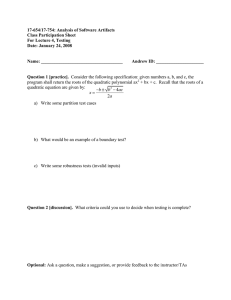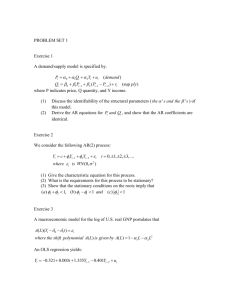Unit Roots and Characteristic Roots
advertisement

Unit Roots and Characteristic Roots L. Magee Winter, 2008 ———————————————————– One way to determine if an AR(p) process such as: yt = ρ1 yt−1 + ρ2 yt−2 + . . . + ρp yt−p + t is stationary is to look at the roots of the characteristic equation. This equation is obtained by expressing the process in lag polynomial notation: (1 − ρ1 L − ρ2 L2 − . . . − ρp Lp )yt = t To get the characteristic equation, replace the lag operator L by a variable (call it z), and set the resulting polynomial equal to zero: 1 − ρ1 z − ρ2 z 2 − . . . − ρp z p = 0 The characteristic roots are the values of z that solve this equation. There are p of them, although some of them may be equal. yt is stationary if all of the roots “lie outside the unit circle”. This phrase reflects the fact that some of these roots may be complex numbers. If the roots all are real numbers (that is, none of the roots are complex numbers), then we can say that yt is stationary if the absolute values of all of these real roots are greater than one. If a root equals one or minus one, it is called a unit root. If there is at least one unit root, or if any root lies between plus and minus one, then the series is not stationary. For example, the AR(1) process: yt = ρ1 yt−1 + t has a characteristic equation: 1 − ρ1 z = 0 and its one characteristic root is z ∗ = 1/ρ1 . The series is stationary as long as |ρ1 | < 1 which is the same condition as |z ∗ | > 1. For ARM A(p, q) processes, the M A(q) part is irrelevant for determining stationarity, so the M A(q) part can be ignored as long as q is finite. The roots of a quadratic equation az 2 + bz + c = 0 are z ∗ = [−b ± √ b2 − 4ac]/(2a). You may also be able to find roots by factoring. For a quadratic, for example, look for values of d, e, f, g such that az 2 + bz + c = (d − ez)(f − gz) = 0. Then the characteristic roots are z ∗ = d/e and z ∗ = f /g. 1




